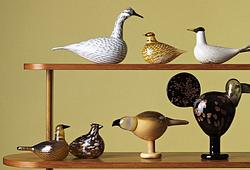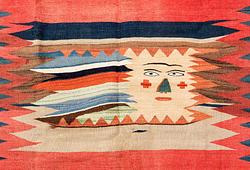Gösta Adrian-Nilsson
"K7" (Hussar)
Signed GAN. Probably executed in 1923. Watercolour, heightened white and indian ink on paper 15.5 x 13 cm.
More information
Katalognumret är nära relaterat till flera andra målningar som är variationer på samma tema. Målningarna var inspirerade av ett möte med en husar i Malmö i augusti 1923, under en period då GAN var hemma från Paris och bodde i sitt föräldrahem i Lund
Det finns skäl att anta att konstnären, förutom att inspireras av de emotionella/erotiska aspekterna, även attraherades rent formellt av de måleriska möjligheter som stod att finna i de dåtida uniformernas praktfulla detaljer: epåletter, knappar, snörmakerier och revärer kunde återges i kubistisk stil som symboler för undertryckt längtan.
I kompositionens centrum kan man skönja vad som troligtvis är husarens huvud med skärmmössa samt stiliserade öga omgivet av kubistiska inslag i form av stiliserade uniformsdetaljer samt bokstaven K respektive siffran 7 (K 7: Kronprinsens husarrregemente i Malmö).
Designer
Gösta Adrian-Nilsson is most notable as a visual artist, and he is a pioneer of Swedish modernism. He studied at the Tekniske Selskabs Skole in Copenhagen and later for Johan Rohde at Zahrtmann’s school in Copenhagen. As an avant-gardist, Nilsson was constantly searching for new influences. In Berlin, he was influenced by the circle around the radical magazine Der Sturm, through Kandinsky and och Franz Marc. In Paris through Fernand Legér and the artists in his circle. GAN was an eclectic in the positive sense of the word. He took the the artist styles of the 1900s and created new impressions. Symbolism, cubism, futurism, expressionism, constructivim and Theosophy were the colours occupying his internal pallet. He had a sharp eye for the masculine and his painting was often energized by the vitality of modern technology, vibrant eroticism, and echoes of tyrants. No other Swedish modern artist exhibits such a unique style.
Read more

























